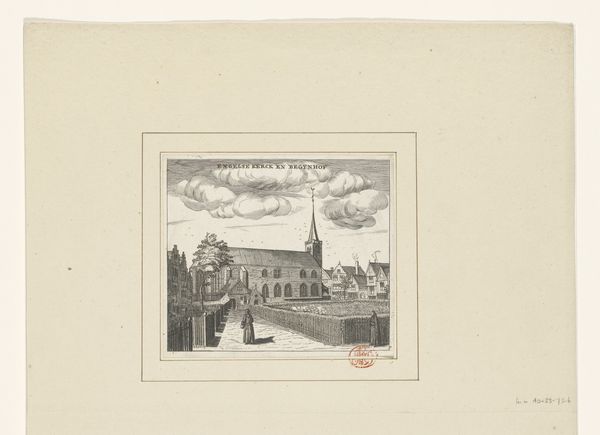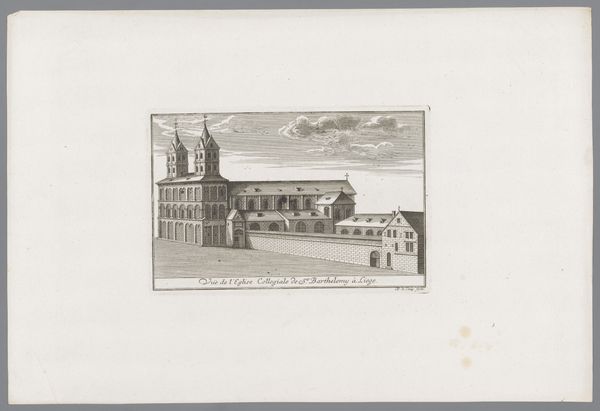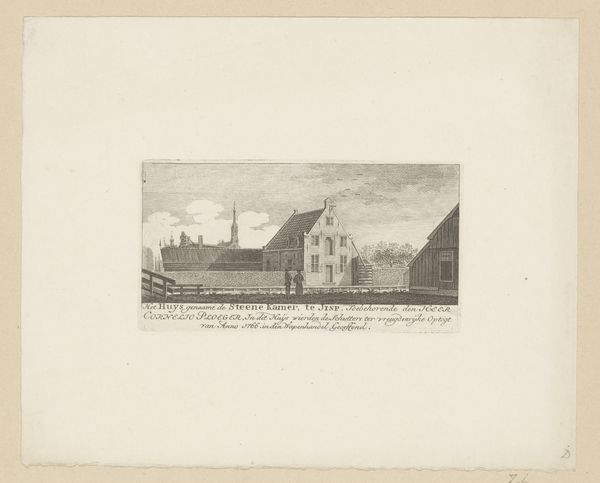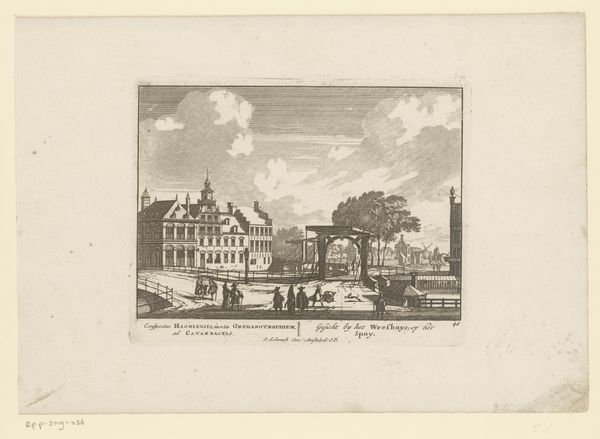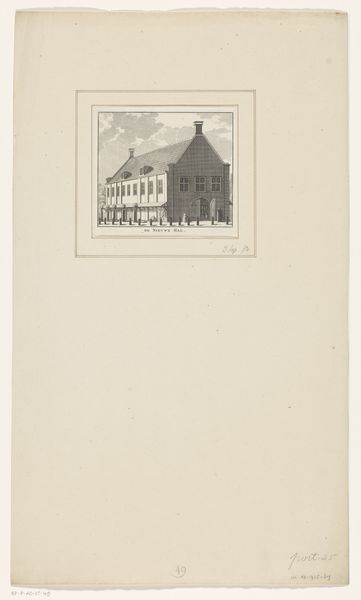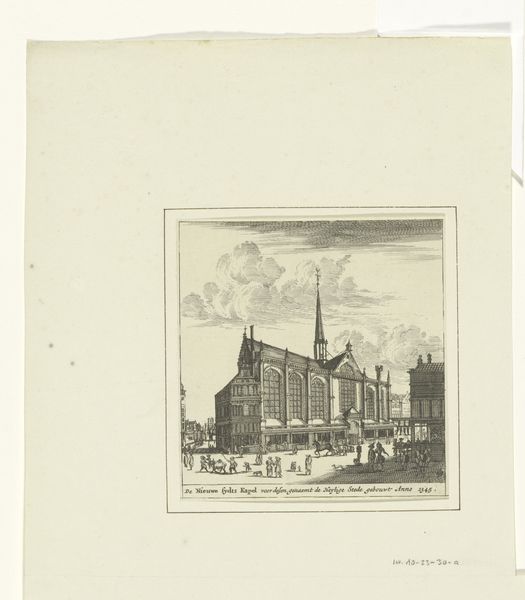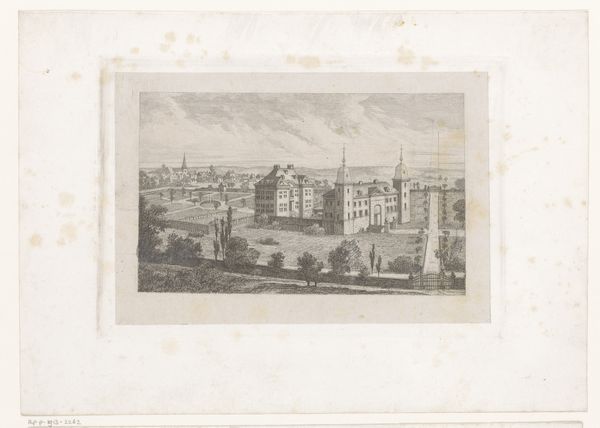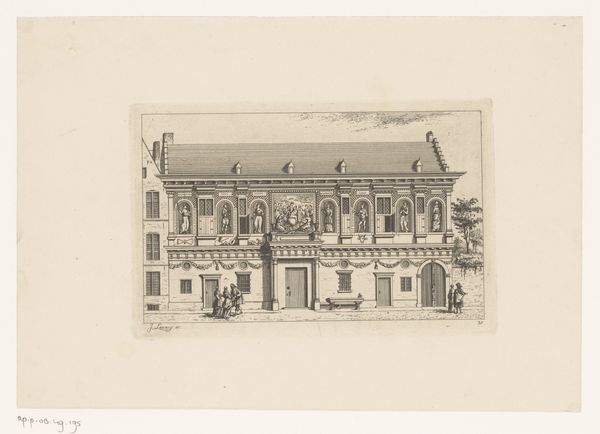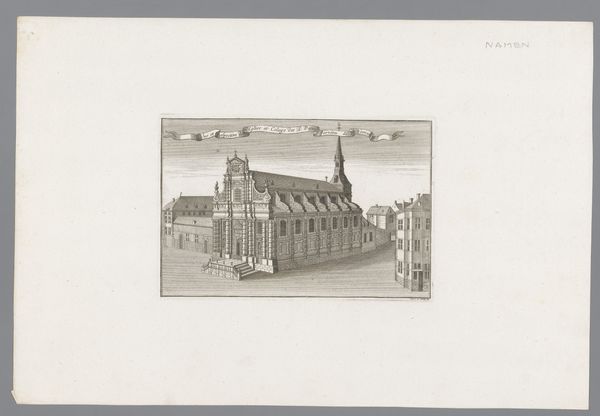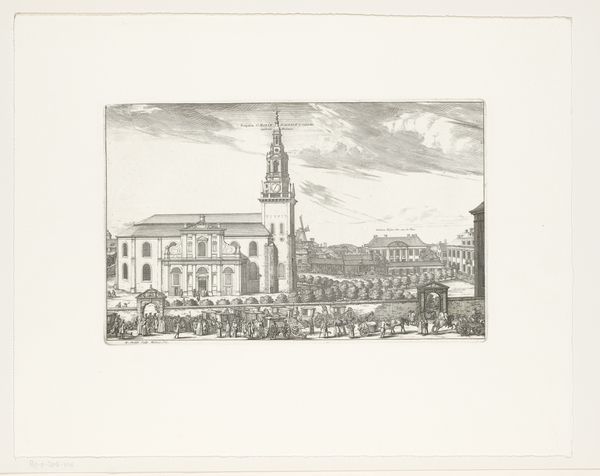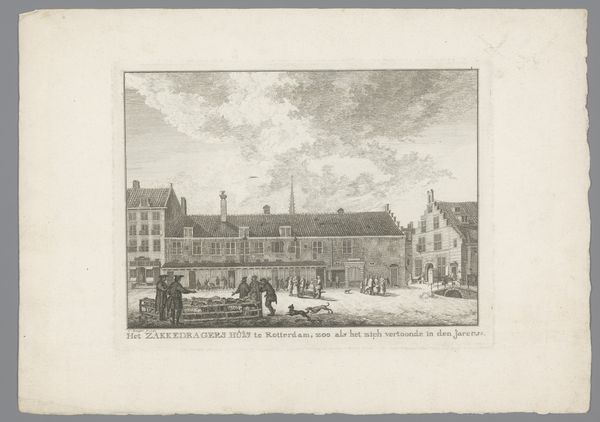
print, etching, paper, ink, engraving, architecture
#
baroque
#
ink paper printed
# print
#
etching
#
old engraving style
#
landscape
#
etching
#
paper
#
ink
#
cityscape
#
engraving
#
architecture
Dimensions: height 132 mm, width 153 mm
Copyright: Rijks Museum: Open Domain
Curator: This is "Gezicht op de Engelse Kerk te Amsterdam," or "View of the English Church in Amsterdam," a print made with ink and engraving, sometime between 1685 and 1726, by Daniël Stopendaal. Editor: It's stark, isn't it? The sharp lines, the almost obsessive detail in rendering the facade of the church... There's a sense of meticulousness, but also constraint. The building looks so... isolated. Curator: As an architectural study, it holds significance beyond mere representation. The etching immortalizes the English Church. Buildings—especially religious structures—aren’t just stone and mortar. They are imbued with the weight of societal expectations and the values of those who inhabit them. Look at the baroque frame around the central image. Do you notice how the clouds mirror the decorations? It’s meant to imply a sense of importance. Editor: But what importance? This church, dedicated to a specific community, framed by these symbolic ornaments, could have either welcomed or rejected countless people. A house of worship simultaneously embodies sanctuary and exclusion, doesn't it? Its positionality as a site of privilege would impact who had the honor of being represented on its steps, strolling towards its entrance with their well-groomed dog. Curator: Well, religious architecture frequently conveys an intended hierarchy of importance. The church, reaching toward the heavens with its spire, speaks to a particular cultural vision, doesn’t it? A relationship with the divine... an aspiration. These images become a cultural record. A language of societal aspirations available for translation across generations. Editor: But the artist’s position is key. What was Stopendaal communicating about that relationship between earthly power and religious virtue? A neutral observation? Or did the very act of meticulously rendering the facade legitimize the Church’s presence and power in Amsterdam? Were the ornamental clouds in support of the divine, or symbolic of being stuck, never truly reaching upwards beyond the limits? These kinds of images, like any form of historical memory, become ideological battlegrounds. Curator: Perhaps. It reminds us of the ways that religious and cultural power were understood, presented, and consumed by people in Amsterdam. An etching like this, while seemingly simple, offers layers of insight into the societal imagination. Editor: Exactly, a complex symbol of how social and political ideologies are visualized. It makes you think, doesn't it? What were the terms of belonging at the time? How have those changed... or haven't they?
Comments
No comments
Be the first to comment and join the conversation on the ultimate creative platform.
